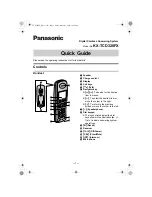
Troubleshooting
Appendix
A-7
MA
IN
T
EN
A
NC
E AN
D TRO
U
BL
ESH
OO
T
IN
G
A
Cause 2
A needle and thread appropriate for the fabric are not
being used.
The machine needle that should be used depends on the
type of fabric sewn and the thread thickness.
If a needle and thread appropriate for the fabric are not
being used, the thread tension will not be adjusted
correctly, causing wrinkles in the fabric or skipped
stitches.
• Refer to “Fabric/Thread/Needle Combinations” in the
“Basic operations” section to check that a needle and
thread appropriate for the fabric are being used.
Cause 3
An appropriate upper tension is not selected.
The setting selected for the upper thread tension is not
appropriate.
Refer to “Setting the thread tension” in the “Basic
operations” section to select an appropriate thread
tension.
The appropriate thread tension differs depending on the
type of fabric and thread being used.
*
Adjust the thread tension while test sewing on a
piece of scrap fabric that is the same as that used in
your project.
• If the bobbin thread is visible from the right side of
the fabric
Using thread tension key (For models equipped with
thread tension key. Refer to page B-8)
Press “-” to decrease the tension of the upper thread.
Using thread tension dial (For models equipped with
thread tension dial. Refer to page B-8)
Turn the thread tension dial to the left to decrease the
tension of the upper thread.
• If the upper thread is visible from the wrong side of
the fabric
Using thread tension key (For models equipped with
thread tension key. Refer to page B-8)
Press “+” to increase the tension of the upper thread.
Using thread tension dial (For models equipped with
thread tension dial. Refer to page B-8)
Turn the thread tension dial to the right to increase
the tension of the upper thread.
Note
• If the upper threading and bobbin threading are
incorrect, the thread tension cannot be adjusted
correctly. Check the upper threading and bobbin
threading first, and then adjust the thread
tension.
















































